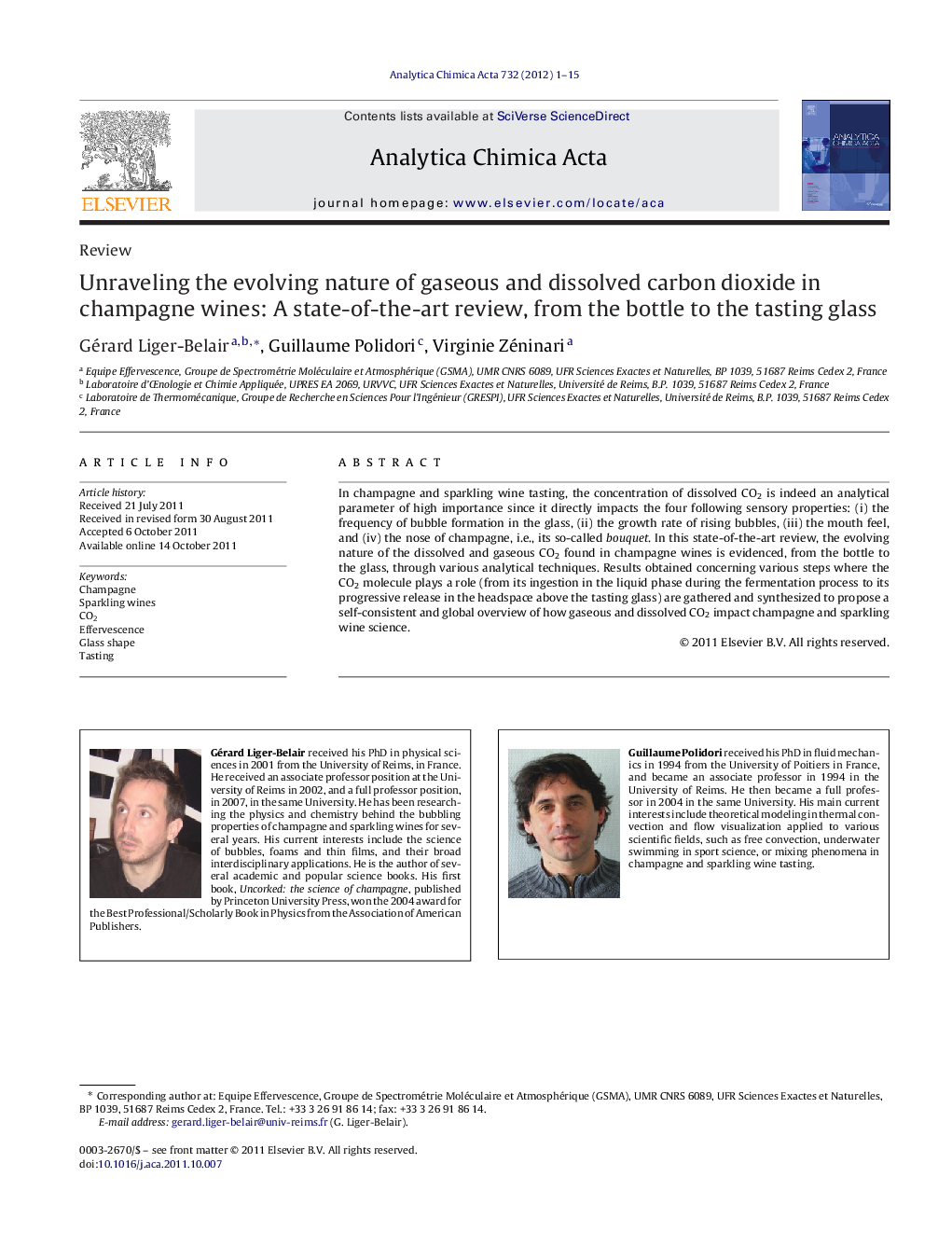| Article ID | Journal | Published Year | Pages | File Type |
|---|---|---|---|---|
| 1165459 | Analytica Chimica Acta | 2012 | 15 Pages |
In champagne and sparkling wine tasting, the concentration of dissolved CO2 is indeed an analytical parameter of high importance since it directly impacts the four following sensory properties: (i) the frequency of bubble formation in the glass, (ii) the growth rate of rising bubbles, (iii) the mouth feel, and (iv) the nose of champagne, i.e., its so-called bouquet. In this state-of-the-art review, the evolving nature of the dissolved and gaseous CO2 found in champagne wines is evidenced, from the bottle to the glass, through various analytical techniques. Results obtained concerning various steps where the CO2 molecule plays a role (from its ingestion in the liquid phase during the fermentation process to its progressive release in the headspace above the tasting glass) are gathered and synthesized to propose a self-consistent and global overview of how gaseous and dissolved CO2 impact champagne and sparkling wine science.
Graphical abstractSetup used to visualize, through IR video recordings, the volutes of gaseous CO2 desorbing from champagne during the pouring process.Figure optionsDownload full-size imageDownload as PowerPoint slideHighlights► CO2 dissolved in champagne and sparkling wines is responsible for bubble formation. ► Dissolved CO2 content constantly evolves once a bottle is uncorked. ► Gaseous and dissolved CO2 were both carefully monitored, from the bottle to the tasting glass. ► We propose a global overview of phenomena, in tasting conditions.
